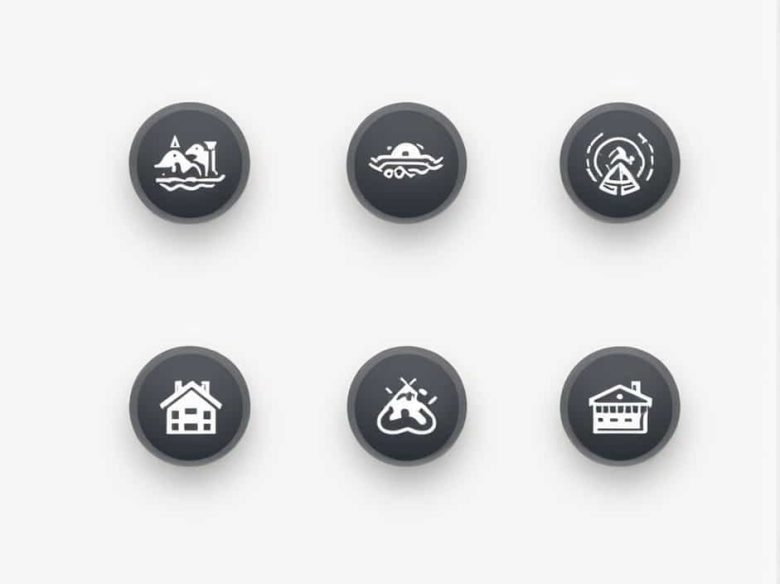Typhoons are powerful storms that can cause severe damage to homes infrastructure and lives. Being prepared before during and after a typhoon can help minimize risks and ensure safety. This guide covers essential steps to take at each stage of a typhoon to protect yourself your family and your property.
Understanding Typhoons
A typhoon is a tropical cyclone that forms over warm ocean waters and brings strong winds heavy rain and storm surges. The strength of a typhoon is categorized based on wind speeds with Category 5 typhoons being the most destructive.
Common Dangers of a Typhoon
- Flooding – Heavy rainfall can cause flash floods and landslides.
- Strong Winds – Can damage buildings trees and power lines.
- Storm Surge – A rise in sea level that can flood coastal areas.
- Power Outages – Electricity and communication lines may be disrupted.
Before a Typhoon: Preparation and Safety Measures
1. Stay Informed
- Monitor weather updates from reliable sources such as meteorological agencies.
- Listen to official warnings and evacuation orders.
- Know the typhoon signal categories in your region.
2. Prepare an Emergency Kit
An emergency kit should contain essential supplies to last at least three days. Include:
- Drinking water (at least one gallon per person per day).
- Non-perishable food (canned goods energy bars dry snacks).
- Flashlights and extra batteries.
- First-aid kit with necessary medications.
- Portable radio to receive news updates.
- Important documents in waterproof containers.
- Whistle for signaling help if needed.
3. Secure Your Home
- Reinforce windows and doors to withstand strong winds.
- Remove loose objects outside that can become flying debris.
- Trim trees and branches near your home to prevent damage.
- Check your roof and walls for weak areas that need reinforcement.
4. Plan for Evacuation
- Identify the nearest evacuation center in your area.
- Prepare a go-bag with essentials if you need to leave quickly.
- Arrange transportation in advance especially for elderly or disabled family members.
- Have an emergency contact list for family and authorities.
During a Typhoon: Staying Safe
1. Stay Indoors
- Find a safe room away from windows and glass doors.
- Keep curtains and blinds closed to prevent injury from broken glass.
- If flooding occurs move to higher ground but avoid attics with no exits.
2. Avoid Flooded Areas
- Do not walk or drive through floodwaters as they may hide dangers such as open drains or electrical wires.
- Turn off gas and electricity if flooding is imminent.
3. Listen to Official Announcements
- Stay tuned to radio or online updates for instructions from local authorities.
- Follow evacuation orders immediately if instructed to leave.
4. Keep Emergency Supplies Accessible
- Ensure flashlights and radios have working batteries.
- Have food and water within reach in case you are unable to leave your home.
After a Typhoon: Recovery and Safety Checks
1. Wait for Official Clearance
- Do not go outside until authorities declare it is safe.
- Be aware of aftereffects such as landslides flooding and fallen power lines.
2. Check for Injuries and Seek Help if Needed
- Provide first aid for minor injuries.
- Contact emergency services if someone is seriously injured.
3. Inspect Your Home for Damage
- Check for structural damage to walls roofs and foundations.
- Look for gas leaks electrical issues and water damage.
- Avoid using damaged electrical appliances until checked by a professional.
4. Clean Up Safely
- Wear protective gear such as gloves and boots.
- Disinfect areas affected by floodwaters to prevent disease.
- Dispose of spoiled food and contaminated water.
5. Stay Alert for More Weather Warnings
- Typhoons may be followed by secondary storms or heavy rains.
- Continue monitoring weather updates for additional risks.
Why Typhoon Preparedness Is Important
1. Saves Lives
Proper preparation reduces the risk of injury and death.
2. Minimizes Property Damage
Securing homes and belongings prevents costly repairs.
3. Helps in Quick Recovery
Being prepared ensures a smoother return to normal life after a typhoon.
Typhoons are dangerous natural disasters but with the right preparedness their impact can be reduced. By taking preventive measures before staying safe during and following recovery steps after a typhoon individuals and communities can protect themselves and recover faster. Always stay informed follow official instructions and prioritize safety at all times.
